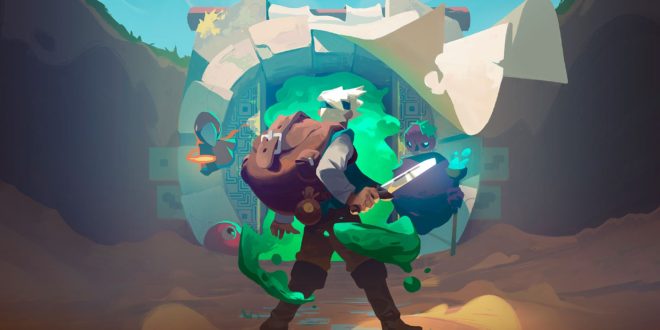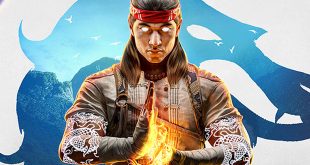The story of Moonlighter is one that many aspiring developers should take note of. If only because Spanish developer Digital Sun did all the right things to ensure its game would make it to market, despite only being a young studio-for-hire when it all began.
From implementing players feedback, to reaching out to a publisher to help with the marketing aspects, to how pre-production matters and why you shouldn’t announce your game too early, founder and CEO Javier Giménez gives valuable insights into the dos and don’ts of indie development.
“Moonlighter was our first original game,” Giménez tells MCV. “The company started as a service company. We are not your typical indie studio, we are a little larger. We are 30 people right now and for a little more than five years we have been developing mobile games, advert games, sample PC games for other people. I think we have done about 60 projects, many of them very small so, yes, Moonlighter is our first original game but we already had the experience and the team that came from being an outsourcing company.”
While the studio is bigger than what we usually expect from an indie developer, the team working on Moonlighter comprised only six people on average. And there’s a good reason for that: it started as a side-project when the team was not working on other people’s products.
“We knew we wanted to build our own games, it’s what we dreamt of. So we used to do prototypes when we had time between projects,” Giménez starts explaining. “We did several but Moonlighter was the first idea that we really believed had something special, we felt that it could be a good game and that we could be good at developing it. So we started dedicating more time into it and, as it evolved, it became more interesting.
“Eventually we did a Kickstarter, which was quite successful. We raised $134,000 and we were asking for $40,000 so that was much better than we expected. It gave us a lot of confidence, so we reinforced the team and decided to look for a publisher. We talked to several and found 11-bits Studios. So it was a story of starting a side project and slowly taking it more and more seriously… It was like a like a snowball effect!”
It’s interesting that, having successfully Kickstarted the project, Digital Sun decided to go for a publisher when a lot of indie developers take the self-publishing route. But it was very much an informed decision.
“In our case, 11-bit didn’t fund Moonlighter, we funded the game ourselves. But we thought that we needed a publisher for their expertise, to start relations, PR, marketing, bringing the game to events… We needed to partner up with a publisher for that and it was a good decision. We’re super happy that we did it,” Giménez says.
He argues that indies or aspiring developers should pay more attention to the business side of things when looking to put their passion project on the market.
“Many young studios lack the business skills. It’s very good if you are creating video games out of passion and not doing this for the money. We are not in it for the money. We love creating video games. But you need to pay attention to it. Any studio is a business in the end and you need to pay people, you need to make sure that your game is going to generate enough so you can continue to do more games. And I think that many teams, they may have excellent programmers, designers and artists but many lack someone who deals with the business side of things and that’s important.”
TWO-FACE
Moonlighter, which first released on PS4, Xbox One and PC in May before its Switch launch last month, gave an interesting twist to your typical roguelike: the player still fights through procedurally-generated dungeons, but during the day they’re just a regular shopkeeper. Or rather main character Will is, as he tries to both fulfil his family’s wish of seeing him running their shop in Rynoka and his own dream of becoming a hero.
Giménez mentions Rogue Legacy and The Binding of Isaac as core influences for the roguelike elements of the gameplay and Harvest Moon as an inspiration for the management part of it. In terms of art, Giménez mentions The Legend of Zelda: The Minish Cap and Hyper Light Drifter, for its “very modern pixel art.”
That’s a wide array of inspirations, and there were challenges in balancing the different aspects of the game, Giménez says.
“Moonlighter has two distinctive cores. The dungeon and combat part, and the shopkeeping and trading part. So we wanted to make those two cores blend together and synergise with each other,” he starts explaining.
“It was quite hard to balance the game because we wanted gold to be the core of it. You cannot progress in the game if you are not a good shopkeeper, if you don’t have gold. So there is no experience system or anything like that. It generates some trouble when you want to balance the game because you use gold for everything: so if you give the player too much gold the game is going be too easy and if you give the player too little gold then the game is going to feel very grindy and you need to do the same things over and over.”
However, Digital Sun managed to find a sweet spot that both the team and players seem to be happy with.
“I think it’s one of the things that turned out pretty well because we were always trying to make the player think about the shop when they were in the dungeons and vice versa. When you are in the shop we wanted the players to be thinking: ‘How do I make gold so I can get equipment to be better at the dungeons?’. So that way the game felt like a whole with two sides where each side had the other one in mind.
“When you’re in the dungeon you are like: ‘Okay, is this item something I want to sell or I want to use to craft?’. So you’re not thinking about killing enemies, you’re thinking about the loot and how you’re going to use it back in the town. So we had this idea of these two cores of the game really blending together and I believe that’s one of the things that did work out pretty well.”
It definitely worked out pretty well based on the game’s success – a success in which the Kickstarter backers were instrumental on many levels.
“We gave our backers early access to a very early build of the game and we received a lot of feedback from them,” Giménez says, before elaborating on the impact of these comments. “Most of them were super useful and I would say we changed a lot of details of the system and added things they expected more of.”
The team continued to listen to its players well after launch too, Giménez continues.
“We have been quite busy after the release. There are actually more people working on Moonlighter now than ever. We have released updates and we still have probably two more to come. We have added new mechanics, we have balanced the stock, we have added more secondary elements even to the story – things like familiars, new game plus, more weapons. We’re going to add mini bosses… A lot of things that we wanted to have in the game but didn’t have the time to do. Since the game was successful, we can now invest in improving the game and expand it.”
Giménez tells us that Digital Sun will continue to support the title for “half a year or more” though it’s not a set date: “Overall it will be like ten or twelve months of development after release,” he says. “We are already working on other projects in parallel. Moonlighter was developed by about six, seven people but we are about 30 so we can work on another project in parallel. We want to be a multi-game studio.”
We naturally ask him if we can know more about the studio’s upcoming projects.
“Not really,” he laughs. “Because the thing is if you say that you’re working on something and you cancel it, you’re going to frustrate a lot of people. So we’d rather not announce anything until we are really really sure that the game is going to be available,” he adds, incidentally giving good advice to indie studios who’ve already launched one successful title to market and who’d be keen to announce their next project as soon as possible.
“We prefer to be cautious about it but I can just say that our intention is to work on several projects at the same time. All of them as good as we can produce, mid-size games, nothing too large,” he adds.
TAKE YOUR TIME
With Moonlighter having done very well commercially and critically, Giménez is now looking back at its development for lessons to apply to these next projects.
“I think we would do more pre-production,” he explains. “It’s that phase of the project where you set the foundations of the game, you prototype the ideas that you’re designing to see if they work well, and we didn’t have a lot of that because the project started very small. It started growing but as it advanced we never stopped and said: ‘Look we really need to prototype these systems and make sure they work together’. It was a little like improvising; we made things as we go. And I think that some of the downsides to Moonlighter were the results of that.
“So if I were to do it again I would start by prototyping everything and making sure we have all the concepts, mechanics and design elements in place and then start the production of the game. I think that would probably result in a better Moonlighter.”
When asked for other pieces of advice he could give to aspiring developers, Giménez says it’s a tough question and pauses for a second before saying: “Creating video games, creating good video games, is very hard. I think no one should underestimate it. It’s true that access to game development has been much easier recently because of all these new engines and that’s great. There’s a lot of creativity going on but it’s a super hard thing. So anyone who aspires to be a developer of good video games… You need to take your job very seriously, work very hard and probably have experience.”
Though it’s true that making a video game has never been easier, that abundance of indie titles is also what makes it so difficult to breakthrough. Aspiring devs should take their time, Giménez reckons, before going head down into their passion project straight away.
“I see that, at least in Spain, there are many indie teams who are starting to work on their own games straight out of college. And sometimes that does not work very well because they are maybe too young and they don’t pay attention to the business side of things. They simply don’t have the experience. They tend to fall in love with the first idea that they have and work on that for three or four years – when they maybe don’t have the experience or the skills yet.
“So I would advise them to not underestimate how hard creating good video games is. Try to really build your skills before you work on your own stuff, work for other people or create a lot of small games, participate in a lot of jams and don’t be too ambitious.”

 MCV/DEVELOP News, events, research and jobs from the games industry
MCV/DEVELOP News, events, research and jobs from the games industry




